Victor Fleming

Cinematographer • Director
Birth Date: February 23, 1889
Death Date: January 6, 1949 — 59 years old
Birth Place: La Cañada, California
Were director Victor Fleming's legacy limited to his two best-known films - "The Wizard of Oz" (1939) and "Gone with the Wind" (1939) - he would have one of the most successful track records of any figure in Hollywood history. But the prolific filmmaker also oversaw a number of other popular and critically acclaimed films during his three-decade long career behind the camera, from "The Virginian" (1929) and "Red Heat" (1932) to "Treasure Island" (1934), "Captains Courageous" (1937) and "Joan of Arc" (1948). Furthermore, he was the guiding hand for some of the industry's most legendary figures in their most acclaimed roles, from Spencer Tracy's Oscar-winning turn in "Captains Courageous" to Clark Gable and Vivien Leigh in "Gone with the Wind."
A tough, unsentimental director, Fleming enjoyed a career that, while rarely spoken of in the same reverent tones as many of his peers, had more highlights than most of the canonized figures in critical and historical circles.
Born Victor Lonzo Fleming on Feb. 23, 1889, he was the son of William Alonzo Fleming and his wife, Elizabeth Evaleen. His parents moved to Southern California shortly before his birth in La Canada; at the time, nearby Pasadena and its neighboring towns were so underdeveloped that Fleming's father participated in building the area's public water supply. For a period, the Flemings operated an orange orchard, where William Fleming died of a heart attack when his son was only four years old. The event had a profound effect on the young man, who would later write that he had little use for sentiment or softer emotions. Fleming dropped out of school in his mid-teens to pursue a fascination for speed and mechanics. He worked in a wide variety of jobs peripheral to these interests, including taxi driver, bicycle and auto mechanic - even briefly, a racecar driver.
While in his twenties, Fleming met director Allan Dwan, for whom he acted as chauffeur before joining the ranks at Dwan's Flying A Studios as a cameraman. There, he learned his craft, which he later applied to the "Ham and Bud" comedies at The Kalem Company before reuniting with Dwan at the Triangle Film Corporation, a studio that served as home base for three of the industry's most powerful producer-directors: D.W. Griffith, Thomas Ince and Mack Sennett. There, he made the acquaintance of silent film star Douglas Fairbanks, with whom he shared a love of reckless athleticism. After serving as cameraman on several major Triangle productions, including Griffith's epic "Intolerance" (1916), Fleming became Fairbanks' chief cameraman. His tenure was briefly interrupted by service with the Signal Corps during World War I, which included duty as President Woodrow Wilson's personal cameraman at the signing of the Versailles Peace Conference. After the war, Fleming reunited with Fairbanks at the newly formed United Artists, where he made his directorial debut with "When the Clouds Roll By" (1919), a romantic comedy that poked fun at the then-novel field of psychiatry that starred Fairbanks and featured the newbie director in a cameo as himself.
Fleming soon developed a reputation as an efficient, no-nonsense filmmaker with a particular knack for drawing exceptional performances from his stars with a minimum of direction. This talent allowed him to work with some of the biggest stars of the 1920s and 1930s, including Constance Talmadge in "Mama's Affair" (1921); Richard Dix in "The Call of the Canyon" (1923); Wallace Beery in Fleming's first hit, "Lord Jim" (1925); and Gary Cooper, who honed his stoic screen persona in "The Wolf Song" (1929) and "The Virginian" (1929). Though Fleming's rough-and-tumble nature - which included off-camera barnstorming with Howard Hawks and big game safaris in Africa - pegged him as a director of "men's pictures," he oversaw some of the most popular and acclaimed features by such female stars as Clara Bow, who later became his lover, in "Mantrap" (1926) and "Hula" (1927), Myrna Loy in "Renegades" (1930), and most notably, Jean Harlow in a trio of films - "Red Dust" (1932), "Bombshell" (1933) and "Reckless" (1935) - which helped to establish her as one of the most alluring actresses of the Depression Era. "Red Dust" was also notable for its male lead, Clark Gable, who would not only regard Fleming as his favorite director in later years, but heavily influence the decision to instate Fleming as director of one of his biggest hits.
Though he exhibited skill in nearly every genre, some of Fleming's most memorable films were focused around children. He directed Jackie Cooper and Wallace Beery in one of the best-loved film versions of "Treasure Island" (1934), and sketched a sensitive portrait of a young man's growth into maturity in "Captains Courageous" (1939), with Freddie Bartholomew and Spencer Tracy in his Oscar-winning role. After directing Gable in the thrilling "Test Pilot" (1938) and helping to complete "The Great Waltz" (1938) after director Julien Duvivier was fired, Fleming was selected to direct one of the greatest children's films ever made: "The Wizard of Oz." Producer Mervyn LeRoy had just fired director Richard Thorpe after test footage had come back with less than optimal results, and turned to Fleming to help save the picture. But Fleming initially resisted the offer because nearly all of its pre-production - from scripts to sets - had been completed. But having recently become both a husband and father to two little girls, he saw in "Oz" an opportunity to make a film that both adults and children could love. He signed on to direct.
Fleming and screenwriter John Lee Mahin added several significant elements to the final version of "Oz." Chief among them was the addition of the third farmhand, Zeke, at Dorothy's farm, who would become the Cowardly Lion (Bert Lahr) in the Oz sequences. He also commissioned songwriters Yip Harburg and Harold Arlen to pen one of the film's key numbers, "Follow the Yellow Brick Road," which sets Dorothy and her companions on their adventure to find the Wizard. He also brought a degree of resolve to Dorothy, who in the initial screenplay, came across as tender but somewhat weak. Imbuing this quality into Judy Garland's performance proved a challenge, as the actress was painfully self-conscious and untried as a screen star. At one point, Fleming slapped her across the face and sent her to her dressing room after she repeatedly blew a key scene. Though shocking by modern standards, Fleming's tight control of and commitment to "Oz" helped to keep the production from collapsing under the weight of its own ambitions, and in doing so, produced a screen classic for the ages.
Fleming left "Oz" shortly before shooting the scenes in Dorothy's drab Kansas home, leaving silent film master King Vidor to complete these B&W scenes. Fleming had already been contracted by producer David O. Selznick to save another film in dire straits - a project that would complete his brilliant, rarely matched one-two punch in 1939. Selznick was hip-deep into a sprawling adaptation of Margaret Mitchell's antebellum romance "Gone with the Wind," and the production, with its countless extras and epic battle scenes, had gotten perilously out of control. In desperation - and at the behest of an insecure Clark Gable, who feared initial director George Cukor was more of a "woman's director" - Selznick fired Cukor and brought in Gable's suggestion, Fleming, who immediately demanded revisions on the script. With Selznick and screenwriter Ben Hecht, Fleming hammered out a new "Gone with the Wind" over the course of five 20-hour days that left all three men physically spent.
Once on set, Fleming focused his attention on the relationship between Gable's Rhett Butler and Vivien Leigh's Scarlett O'Hara. Gable had initially been concerned that in the hands of a director like Cukor, the difficult part of Butler would come across as soft and secondary to Leigh and co-star Olivia de Havilland. But Fleming soothed the star's worries by turning Rhett and Scarlett into proud combatants in love, unable to resist each other, yet too stubborn to admit it. Gable, in turn, drew much of the character's roguish charm from Fleming himself, who again established himself as a formidable figure behind the camera by verbally brawling with the headstrong Leigh throughout production. Their struggles informed Scarlett's fierce independence in the face of Rhett's relentless pursuit; at one point, after being requested by Fleming to "resist, but not too much" as Gable reached for her, Leigh responded with an improvised slap across the actor's face. Fleming was pleased by the spontaneity of the reaction, which was clearly a reaction to the direction, and kept the shot in the picture."
Gone with the Wind" was a grueling experience for Fleming. A ceaseless barrage of memos from Selznick, combined with editing duties on "Oz" in the evening, while shooting "Gone with the Wind" during the day and a steady diet of vitamins and pills to maintain the schedule, forced him to drop out of the picture for almost three weeks on doctor's orders, following a rumored nervous breakdown. Staff director Sam Wood took over direction during his absence, but Fleming returned to the sprawling set to complete shooting and assist in the editing. In the end, he had saved not one but two of the greatest films in movie history from complete disaster, and the Best Director Oscar he took home for "Gone with the Wind" was a testimony to the breadth of his talents. But the exertion of bringing the films to fruition took a serious toll on his health, and Fleming would only direct a handful of films in their wake.
He reunited with Spencer Tracy for a remake of the Oscar-winning 1931 film version of "Dr. Jekyll and Mr. Hyde" (1941) that relied on the actor's talents to depict his transformation from the kindly doctor to his beastly alter ego, rather than the groundbreaking makeup seen in the previous film. It was not a success, and Fleming and Tracy quickly moved to their next project, an adaptation of John Steinbeck's "Tortilla Flat" (1942). A lightweight drama about the lives of Mexican-American fishermen in a small California town, it was highlighted by a touching dramatic turn by the Wizard of Oz himself, Frank Morgan, who earned an Oscar as a kindly dog owner. The charming fantasy "A Guy Named Joe" (1943), with Tracy as a pilot who attempted to keep the woman of his dreams happy from the afterlife by keeping her new love (Van Johnson) safe during a dangerous Air Force mission, would be the actor's final collaboration with Fleming.
In 1945, Fleming reunited with Gable, who was freshly returned from duty in World War II, for the romance "Adventure" (1945), about a roguish sailor who learned to settle down through his love for a librarian (Greer Garson). He soon began work on "Joan of Arc" (1948), a biopic of the French religious heroine with Ingrid Bergman in the title role. The film was a troubled experience for the director, who struggled with its unwieldy length of two-plus hours and allegedly, a failed relationship with Bergman. It was edited by some 45 minutes prior to its release, which received mixed reviews and only a modest box office return, but seven Oscar nominations and two wins for costume design and cinematography. Fleming, however, would not live to see the ceremony: he was felled by a massive heart attack on Jan. 6, 1949, two months after its release. In subsequent years, his film career rarely received the praise for its breadth and consistent quality, save for the iconic status of "Oz" and "Gone with the Wind." However, a 2009 biography, Victor Fleming: American Movie Master, by Michael Sragow, made a compelling case for his status as one of Hollywood's most accomplished and versatile directors.
By Paul Gaita
Credits

Días de cine clásico

Joan of Arc

Jeanne D'Arc

Adventure
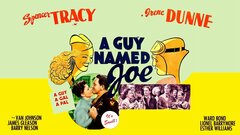
A Guy Named JoeStream

Tortilla Flat
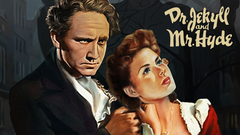
Dr. Jekyll and Mr. HydeStream

Dr. Jekyll and Mr. HydeStream
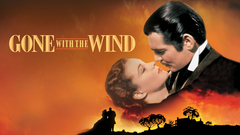
Gone With the WindStream
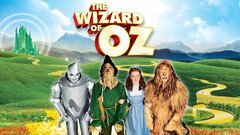
The Wizard of OzStream

The Wizard of OzStream

Test PilotStream
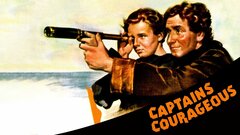
Captains CourageousStream

The Farmer Takes a Wife
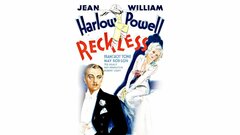
RecklessStream
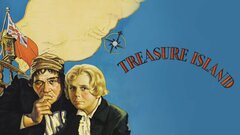
Treasure IslandStream

The White Sister
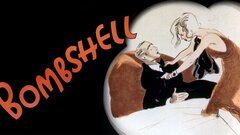
BombshellStream

Red Dust

The Wet Parade

Around the World in 80 Minutes

Renegades

Common Clay
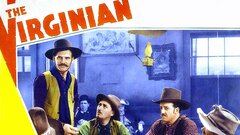
The VirginianStream

The Wolf Song

The Awakening

The Way of All Flesh

The Rough Riders

Hula
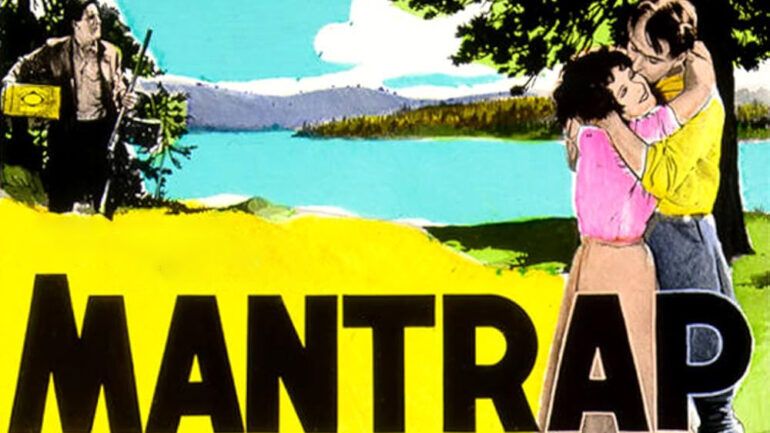
Mantrap

Code of the Sea

The Mollycoddle

When the Clouds Roll By

His Majesty, the American

Down to Earth

The Half-Breed

The Habit of Happiness

American Aristocracy

His Picture in the Papers











